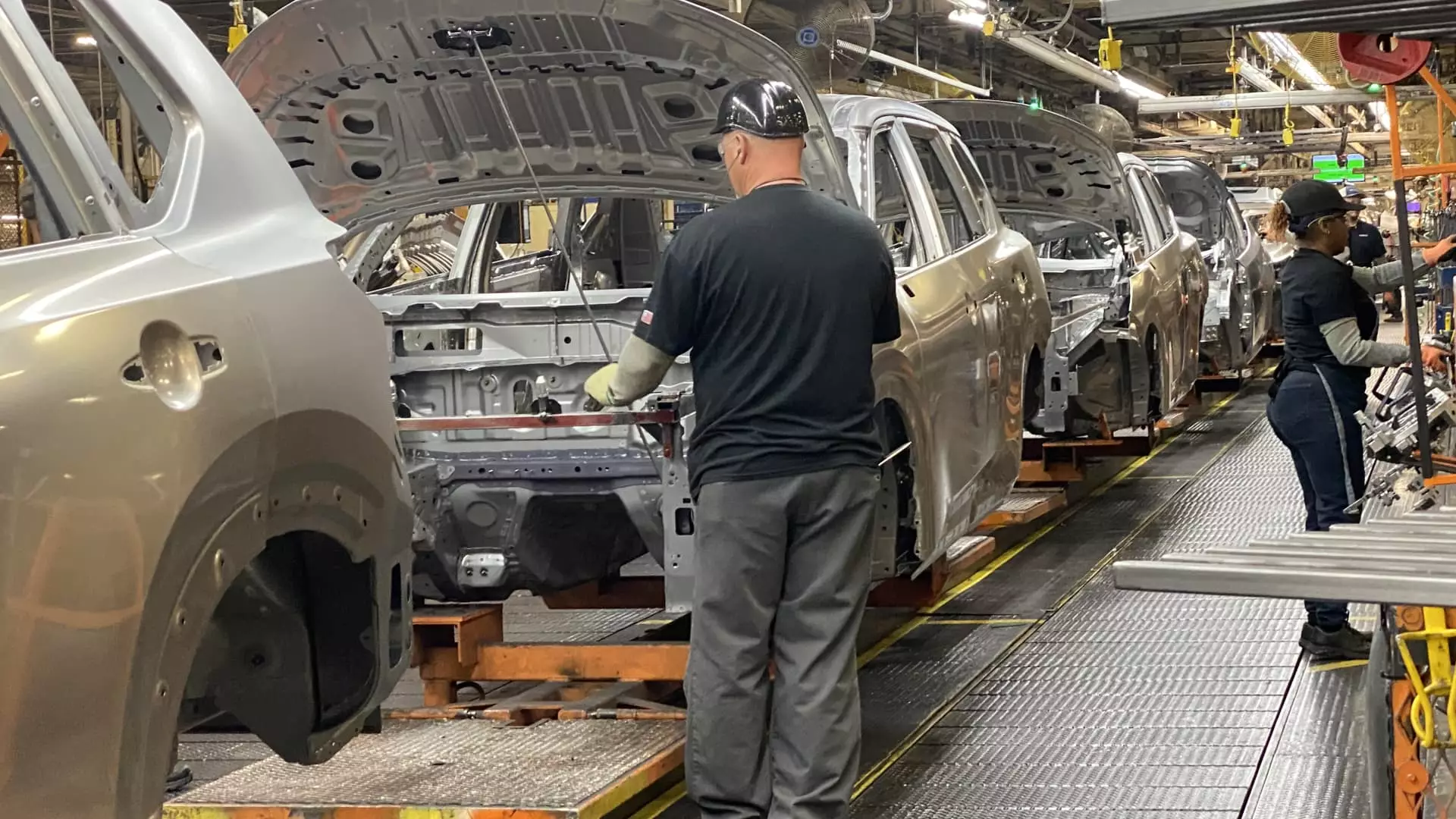In a bold display of economic nationalism, President Donald Trump’s implementation of a 25% tariff on imported vehicles is reshaping the dynamics of the automotive industry, driving a dramatic and troubling shift that analysts fear will be enduring. These tariffs threaten to spark changes that go beyond mere price hikes; they signal a profound transformation in how and where automobiles are manufactured. As we witness these developments, it is crucial to grasp the wider implications, which could bring about a seismic shift in consumer behavior, automaker strategies, and economic viability.
Analysts from notable institutions, such as the Boston Consulting Group, underscore the consequential nature of these tariffs. Felix Stellmaszek, their global lead for automotive and mobility, predicts that 2023 may emerge as the most pivotal year in auto industry history—not simply due to immediate cost pressures but because it catalyzes fundamental shifts in production strategies and supply chains. This assertive stance paints an unsettling picture: a reality where consumers may find themselves facing scarcity, vast price increases, and a rapidly changing marketplace.
The Financial Burden of Tariffs
The imposition of these tariffs is expected to unleash financial chaos, with estimates indicating that the automotive industry could absorb additional costs ranging from $110 billion to $160 billion annually. This burden weighs heavily on automakers, particularly those based in the U.S., who are forecasted to absorb approximately $107.7 billion in added expenses. This financial impact poses a troubling challenge, especially for iconic American stalwarts like General Motors and Ford, who face $41.9 billion in additional costs alone.
As these tariffs take their toll, it is evident that automakers will be compelled to make tough choices. Increased production costs often translate to higher prices for customers, effectively squeezing the purchasing power of the average consumer. In today’s economy, where inflation is already biting hard, the prospect of rising vehicle costs could deter many prospective buyers, pushing them out of the new car market altogether and ushering in a chilling regression in auto sales.
Consumer Consequences: The Economics of Affordability
At the intersection of these tariffs and consumer behavior lies a worrying trend: the skyrocketing costs of both new and used vehicles. With the average price of a new car nearing the $50,000 mark, financing options become significantly strained. Auto loan rates currently hover at inflated levels, with averages exceeding 9.64% for new vehicles and a staggering 15% for used cars—numbers many consumers simply cannot afford. As vehicle prices escalate due to the impending tariffs, it inevitably leads to poorer affordability, with industry experts predicting a dip of up to 2 million fewer vehicle sales annually in the U.S. and Canada.
This dip is not just an automotive issue; it has ripple effects throughout the economy. As car prices escalate, the purchasing power of households declines, curbing spending on other goods and services. Families already stretched thin by rising costs in various facets of daily life are unlikely to consider larger purchases like vehicles, further exacerbating the challenges facing the automotive sector.
The Strategic Responses of Automakers
In the face of this tariffs-induced upheaval, automakers are responding with diverse strategies characteristic of organizational agility. While some manufacturers, like Ford and Stellantis, are rolling out temporary employee pricing deals to maintain sales volumes, others—such as Jaguar Land Rover—have curbed shipments entirely. Meanwhile, Hyundai Motor is taking a more cautious approach, opting not to raise prices in the short term to mitigate consumer fears.
Such divergent responses underscore the complex nature of the dynamic automotive landscape. In an environment where long-established practices are being upended, companies need to weigh the immediate fallout of tariffs against potential long-term gains in a global marketplace that may inhibit competition.
The Broader Economic Implications
As we navigate this new reality marked by increased tariffs and rising prices, the implications extend well beyond the boundaries of the automotive sector. The ripple effect of declining sales, higher costs, and shrinking consumer budgets portends an uncomfortable economic outlook. This scenario poses a challenge not only for manufacturers and dealers but also for suppliers, service providers, and the broader economy that relies on the robust activity of the auto industry.
Indeed, as analysts have pointed out, reducing vehicle sales by even a couple of million units has far-reaching implications. It destabilizes supply chains, impacts job markets, and ultimately influences economic growth at a macro level. Resiliently navigating the shifting tides of tariffs could define the future of the automotive industry, yet it demands adaptive strategies and inventive problem-solving from stakeholders across the board. In grappling with these changes, let’s hope that policymakers consider the long-term sustainability of our economy rather than short-lived gains that could stifle innovation and progress.

